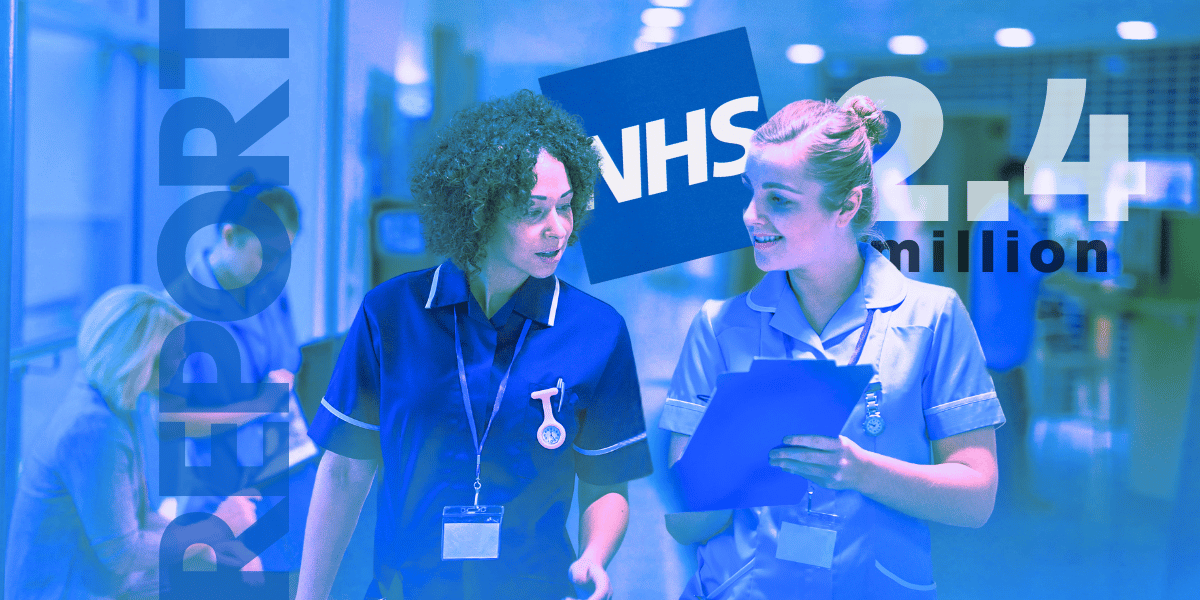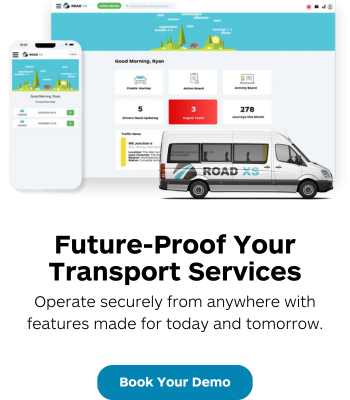Recent ‘NHS England Monthly Operational Statistics’ covering Q4 2024, indicate a healthcare system under substantial strain. Elective waiting lists, A&E attendances, and ambulance response times have all risen, reflecting critical operational challenges.
Within this context, community transport emerges as a vital yet underutilised mechanism for improving patient flow, reducing missed appointments, and relieving hospital capacity pressures.
In parallel, extensive research into missed appointments highlights transportation as a key barrier to care. Addressing these gaps through targeted interventions—such as modern scheduling tools, reminder systems, and innovative community transport models—can yield measurable improvements in healthcare access, patient outcomes, and overall efficiency.
The NHS Under Pressure
Here are some key insights for October – December 2024:
October 2024
- Elective Care Waiting List: 7.76 million patients, with orthopaedics, ophthalmology, and general surgery showing the most enormous backlogs.
- A&E Attendances: 2.2 million, a 3% rise from September, driven by seasonal illnesses.
- Ambulance Response Times: Category 2 (e.g., chest pain, suspected strokes) response times averaged 35 minutes, with multiple trusts reporting handover delays of 30+ minutes.
These early seasonal pressures leading into winter underscore the importance of preventing missed appointments and optimising resource deployment to get people to and from hospital appointments.
November 2024
- Growing Elective Demand: The waiting list climbed to 7.82 million, straining specialised surgical services and routine operations.
- Rising A&E Caseload: 2.3 million visits (a 4% increase from October), attributed mainly to respiratory illnesses and influenza.
- Staffing and Capacity: Staff sickness exceeded 5% in several regions, with bed occupancy reaching 94%.
- Ambulance Delays: Average Category 2 response times increased to 37 minutes, indicating mounting stress on emergency services.
Capacity limitations and staff shortages highlight the urgency of improving patient flow, including innovative transport strategies to reduce appointment no-shows.
December 2024
- Record A&E Admissions: 2.4 million A&E attendances—the highest in 2024—drove four-hour performance targets down to 70% nationally.
- Elective Cancellations: Non-urgent procedures faced frequent short-notice cancellations due to emergency prioritisation.
- Ambulance Handover Delays: Category 2 response times rose to 42 minutes, with 20% of handovers delayed beyond 30 minutes.
- Bed Occupancy: Averaged 95%, limiting capacity for new admissions and prompting urgent discharge planning.
Heightened winter pressures underscore the need for robust community transport options to facilitate non-emergency journeys, reduce missed appointments, and alleviate emergency service bottlenecks.
The Impact of Transportation on NHS Appointments
Missed appointments (known as did-not-attend, DNA) waste valuable clinical resources, prolong waiting lists, and adversely affect patient health outcomes. Studies have identified transportation as a major contributor to DNA instances:
- Transportation Problems: One study found that 46% of patients missed appointments due to transportation issues, underscoring its role as a critical determinant of healthcare access. This challenge is especially acute among lower socioeconomic groups with limited transport options.
- Demographic Factors: Caregivers of children without consistent car access or those who had previously missed appointments due to transport difficulties were more likely to miss future appointments. This suggests a compounding effect, where one negative experience can lead to ongoing non-attendance.
- Financial Constraints: Certain patients cannot afford travel costs, adding an economic barrier that intersects with transport challenges. This further complicates appointment adherence and can worsen health disparities.
The impact of missed appointments goes beyond just the individual, however:
- Extended Waiting Times: DNAs contribute to increased backlog, delaying care for other patients.
- Resource Strain: Providers face administrative costs linked to rebooking, and clinical staff experience idle time from no-shows.
- Risk of Missed Diagnoses: Delays in appointments, such as those in memory clinics, can exacerbate conditions—particularly concerning given the backlog magnified by the COVID-19 pandemic.
Efforts to reduce DNAs due to transport limitations could include:
- Automated Appointment Reminders: Text message reminders, for instance, have effectively reduced DNA rates by addressing forgetfulness and logistical gaps.
- Telemedicine: While telehealth reduces reliance on physical transport, it introduces challenges such as technology barriers and potential miscommunication during virtual assessments.
- Innovative Solutions: Smartphone applications that integrate transport information and send appointment reminders aim to bridge gaps created by unreliable or inaccessible transport options. Road XS, for example, supports the ability for GP surgeries and hospitals to book transport from the reception desks (or from the doctor’s office) if required and can ensure medical facilities only have access to their patient’s information.
How Community Transport Provides the Key
Within the broader challenge of missed appointments, community transport emerges as a strategic, high-impact solution:
- Reducing DNAs: Reliable, on-demand transport services can lower non-attendance rates by ensuring patients reach clinics punctually—particularly vital for older adults or those with mobility constraints.
- Alleviating Ambulance Dependence: Emergency services become overburdened when non-critical patients turn to ambulances due to a lack of alternatives. Community transport can divert stable patients, enhancing ambulance response times for emergencies.
- Faster Discharges: Efficient transport at discharge frees up hospital beds, a key metric for capacity management—especially critical when bed occupancy hovers near 95%.
- Cost & Resource Optimisation: Reducing missed appointments curbs rebooking workloads and better utilises clinical time, delivering financial savings and improved patient outcomes.
Pathways to Implementation
Realising the full potential of community transport requires a structured, data-driven approach:
Technology and Data Analytics
- Route Optimisation: Algorithms and real-time data can schedule and adjust routes to improve efficiency.
- Online Booking Portals: Digital platforms allow clinicians, patients, and carers to coordinate transport in real-time, reducing administrative overheads.
Cross-Sector Collaboration
- Partnerships: Working with NHS trusts, local councils, and community organisations can expand fleet capacity and standardise service quality.
- Funding Models: Joint investments or outcome-based contracting can incentivise stakeholders to maintain high service standards.
Incorporate Patient-Centric Innovation
- Smartphone Technology: Integrated apps offering appointment reminders and tailored travel information reduce the likelihood of logistical barriers.
- Telehealth Synergy: Combine transport services with virtual consultations where appropriate to maximize convenience and cost-effectiveness.
Potential Outcomes
A well-implemented community transport strategy has the potential to generate:
- Reduced Waiting Lists: Fewer DNAs translate into shorter queues and faster appointment turnover.
- Enhanced Operational Efficiency: Ambulance crews can focus on urgent cases, improving Category 2 response times.
- Improved Patient Outcomes: Timely access to care fosters better health trajectories and reduces readmissions.
- System Resilience: Community transport can help the NHS better manage seasonal spikes or future public health crises by smoothing patient flow.
Key Takeaways
The October to December 2024 data reveals an NHS grappling with elevated demand, stretched capacity, and rising appointment backlogs.
At the same time, multiple studies confirm that transportation challenges significantly contribute to missed appointments. Community transport—bolstered by technology, cross-sector collaboration, and patient-centric design—can alleviate these pain points.
By ensuring more patients reach their appointments, the NHS can reduce wait times, decrease unnecessary ambulance calls, and provide better continuity of care. The net result is a more resilient healthcare system equipped to serve patients efficiently—even in the face of seasonal pressures or unforeseen disruptions.
References & Further Reading
Monthly Operational Statistics, October 2024
Monthly Operational Statistics, November 2024
Monthly Operational Statistics, December 2024






